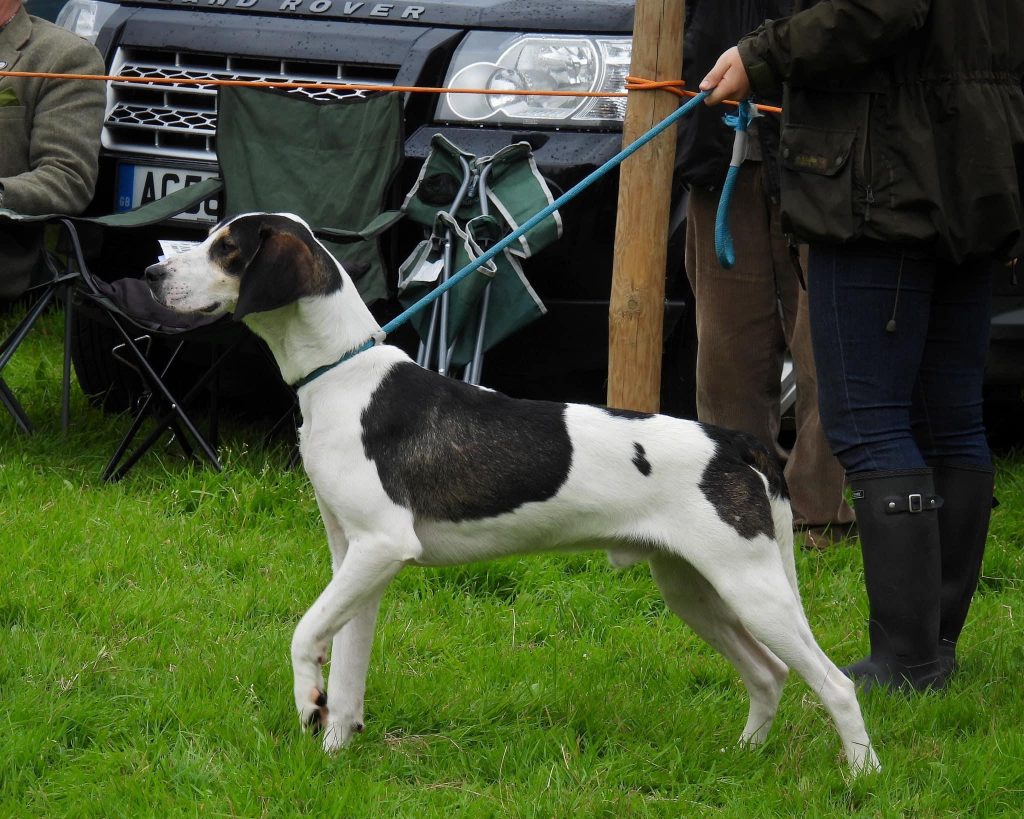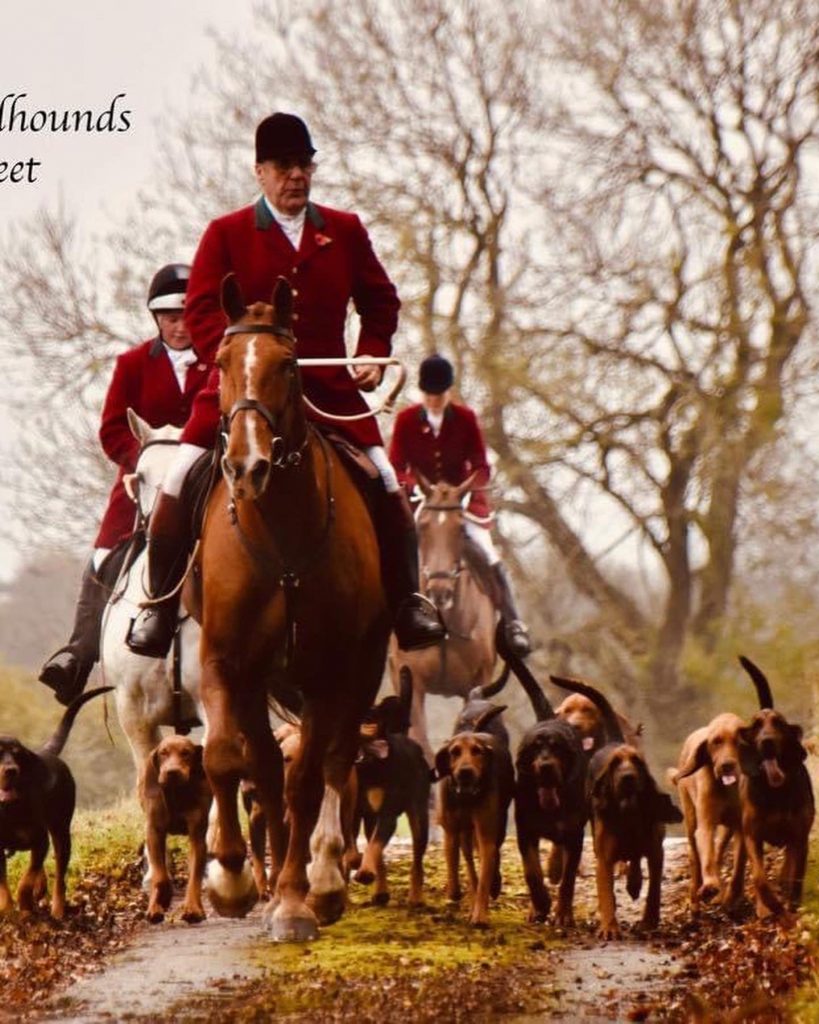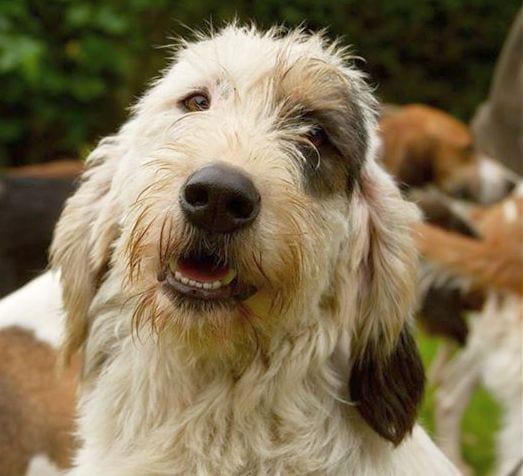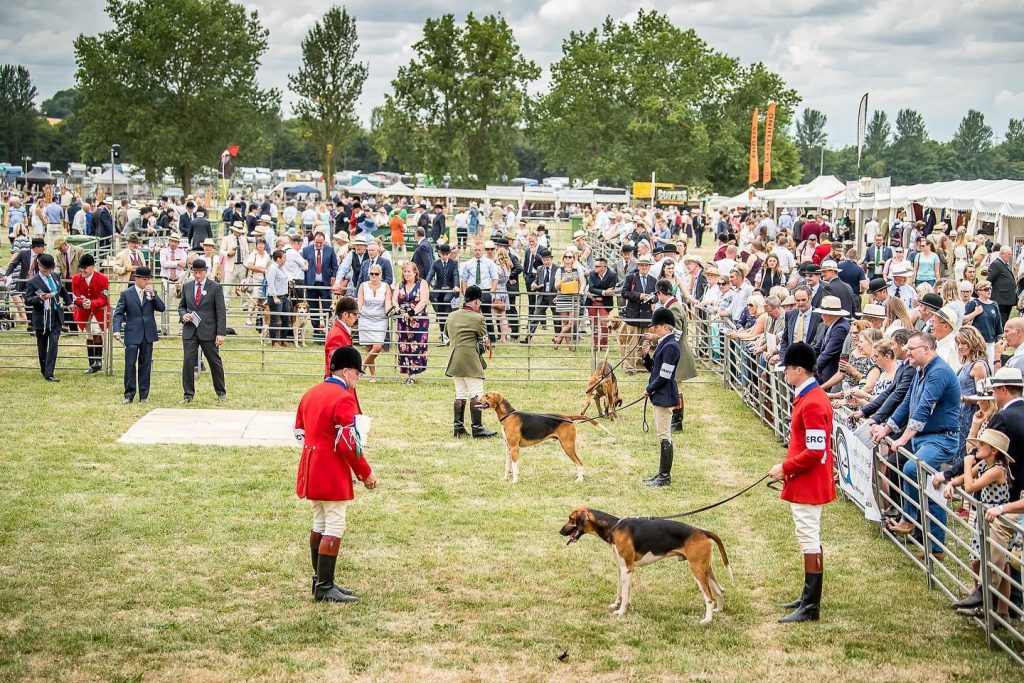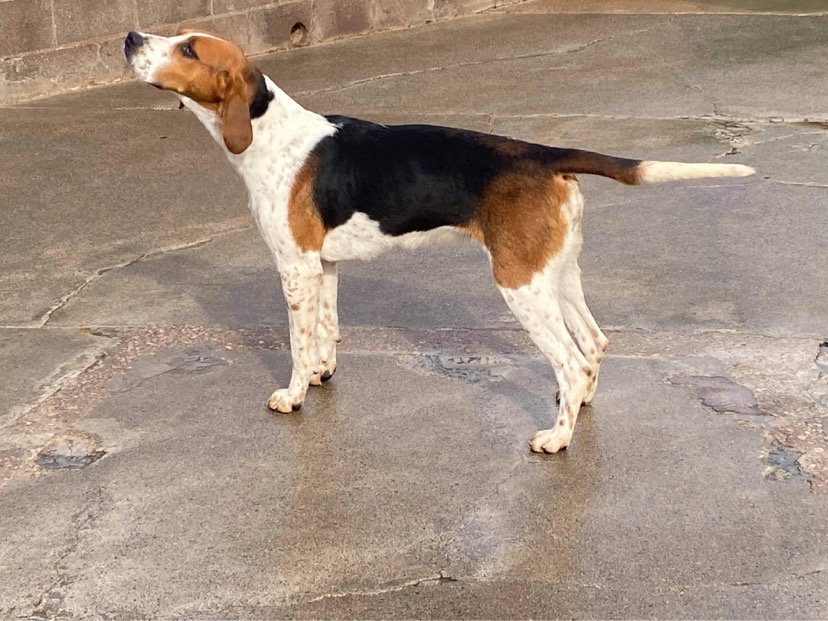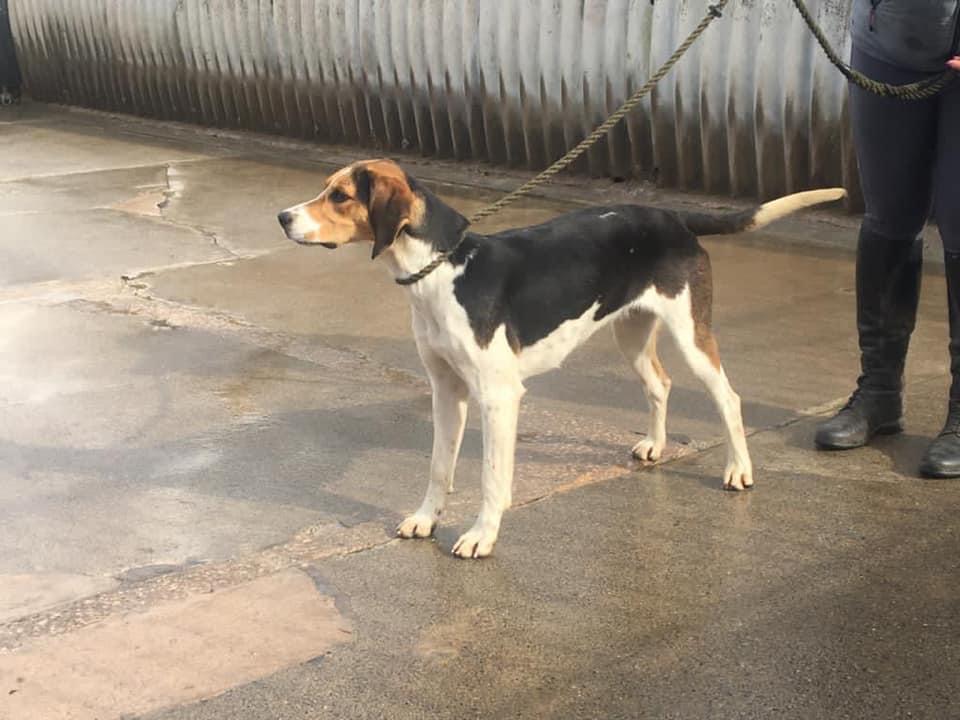While the current breed standard with the Kennel Club is an interim version it does give a basic outline of the breed. However, One must be mindful that these hounds are bred to have the athletic ability to hunt their quarry. With different qualities for their different countries. We explore these further below and so judges should be mindful of the varieties similar to that in the Basset & Dachshund
The Welsh Hound
Easily identifiable by its woolly coat, the Welsh hound has a more wire like coat giving a fluffy appearance. Often found to be lighter in colour – Sir Edward Curre bred white hounds on the edge of Wales that became infamous for their cry. Still deep of chest, this time with a lower set ear that should cover the muzzle when head down hunting.
The “Black & Tan” Hound
Commonly mistaken as a Bloodhound, the black & tan foxhound were found in the Dumfriesshire Kennels until 2001. Founded by Sir John Jardine after WW1.
These particular hounds were bred from the English Foxhound, Bloodhound & Grand Bleu de Gascogne mix meaning they were larger in appearance than the Foxhound itself.
This type of Foxhound is possibly the rarest of them all, although some bloodlines do still exist in the Peak District & France this hound is now extinct.
The Old English Foxhound
A cousin to the American foxhound, there are only a few remaining old English packs in the UK. A good reference would be the Duke of Northumberland’s pack The Percy Hunt. A maximum of bone in this big solid hound would be bred for the arable country where going can be deeper. Deep of chest with high set & strait stern this hound would have good round feet.
Modern English
As eluded to by its name the modern English as lighter and smaller version of the old English. This is what most people would recognise, coming in a variety of colours these hounds are often smaller and lighter of bone than it’s OE counterparts giving a rangier movement but still with straight front, deep chest, larger squared skull and good round feet These are often crossed with the fell hound to create the “hill hound” a more athletic version of the modern English with a much lighter frame & independent nature – a hound VERY common in the North of England. A good example would be Charlie Shirley-Bevans Tynedale hounds.
The Fell Hound
Native to the Cumbrian fells these packs are hunted on foot & so must be far more independent. These hounds can be smaller in height & frame with a longer toe giving a “hare foot” for this more difficult terrain. Often fell hounds can be recognised by their pointer nose & a badger colouring. Much lighter in frame with deep chest.
